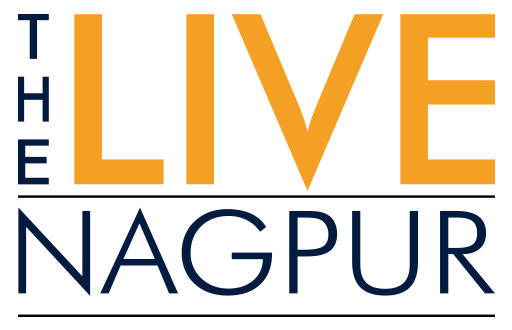Penalty kicks are one of football’s most high-pressure moments. Success in conversion determines what will be called titles but failure can become career-defining. The specific issue stems from both mastering the technical aspects while maintaining sufficient mental strength in that critical instance.
Professional penalty-takers achieve successful conversions between 75% and 80% but their accuracy rate decreases below 70% in critical decisive moments. So the 2022 World Cup data from FIFA demonstrated pre-shooting periods with decreased heart rate variability directly resulted in lower conversion outcomes between players.
Players who play in Champions League finals or domestic league championship matches must display precise technique combined with emotional composure after implementing repeatable routines under various penalty scenarios.
Core Psychological Elements Behind Successful Penalties
Elite players invest significant effort into perfecting this skill, often using data, psychology, and biomechanics. Professional clubs and performance platforms, including those supporting analysis tools like Melbet log in, increasingly track penalty patterns, success rates, and decision-making behavior under pressure. Top-level players often display consistent mental habits when stepping up to the spot. These are not random routines—they’re repeatable psychological patterns designed to override pressure:
- Pre-shot breathing control to reduce heart rate
- Visualisation of shot placement before approach
- Neutral facial expression to avoid giving clues to the goalkeeper
- Fixed routine length (e.g., same number of steps, timing)
- Non-reaction after decision is made, regardless of keeper movement
Such techniques are used to maintain focus and prevent last-moment second guessing—often the true cause behind failed attempts.
Top-level players often display consistent mental habits when stepping up to the spot. These are not random routines—they’re repeatable psychological patterns designed to override pressure. Many clubs now use cognitive trainers or sports psychologists to condition penalty takers. Manchester United, for example, implements biofeedback sessions where players practice under simulated crowd noise and pressure. Real Madrid includes “penalty mindset drills” where players perform shots immediately after high-intensity sprints to replicate elevated heart rate conditions.
Such techniques are used to maintain focus and prevent last-moment second guessing—often the true cause behind failed attempts. Consistency in decision-making under pressure is what separates elite takers from inconsistent performers.
Top Penalty Kick Techniques and Success Rates
| Player | Known Technique | Career Penalty Conversion Rate (%) |
| Harry Kane | Power + Placement | 88.4 |
| Jorginho | Hop and Delay | 91.1 |
| Cristiano Ronaldo | Stutter + Observation | 84.0 |
| Lionel Messi | Quick release | 77.5 |
| Bruno Fernandes | Hop-step + Focus | 87.5 |
Technique Selection Based on Player Profile
Different styles suit different body types, footedness, and temperaments. Taller players with strong lower-body power often rely on forceful strikes, while others may prefer deceptive timing. Platforms like Melbet Facebook frequently circulate clip-based analysis, breaking down how approach angles, body posture, and last-second cues contribute to goalkeepers guessing correctly or diving the wrong way. This tactical nuance has become part of fan discussions and coaching breakdowns alike.
During his move Cristiano Ronaldo incorporates a stutter-step for two distinct purposes: first to misdirect the goalkeeper then to gain an extra half-second of viewing time. Jorginho’s characteristichop serves a dual purpose through athleticism since it enables him to make a final play choice once the goalkeeper composes their defense. EUFA Technical Reports demonstrate that keepers who react to attacks have a 12% lower success rate compared to delayed shooting attempts from opponents.
The match conditions and playing surface drive players to choose their techniques. During sloppy or slippy playing surfaces playing a direct approach using few steps works best since it decreases the risk of missteps or wrong timing in delivering the strike.
Case Study: Mbappé and Penalty Pressure at the Euros
A well-documented example of penalty pressure unfolded at Euro 2020, when Kylian Mbappé missed the decisive penalty in France’s Round of 16 shootout against Switzerland. Analysis later showed that Mbappé deviated from his usual routine—shortened his run-up and made premature eye contact with the goalkeeper.
French national team psychologists admitted the miss reflected cognitive overload and lack of pre-shot grounding.
Since then, the French squad has added structured post-match visualisation and pressure-response drills to their recovery training. Mbappé’s penalty success rate in the 2022–23 season with PSG improved significantly, with a more deliberate approach and emphasis on late keeper reading—demonstrating how elite players adapt after failure using science-backed adjustments.
Building a Repeatable Penalty Routine
Professional footballers rely on consistent systems that translate to high-pressure match moments. Here’s what’s often included:
- Approach angle (straight vs. diagonal)
- Step cadence (short-hop vs. long-stride)
- Eye fixation (ball vs. goalkeeper)
- Preferred foot zone (left/right/center)
- Post-shot recovery stance
All leading clubs have added these technologies to their virtual reality training spaces. Bayern Munich trains its players to block distractions by playing video sequences with real crowd sounds and active goalkeeper movements.
Professional clubs including Ajax use eye-tracking goggles to monitor player eye movement which helps prevent the unintentional display of passing intentions. When combined with specific details players convert instinctual movements into accurately executed techniques. Players achieve high performance quality under stressful situations when reinforced training skills result in low mental stress requirements.
👉 Click here to read the latest Gujarat news on TheLiveAhmedabad.com




